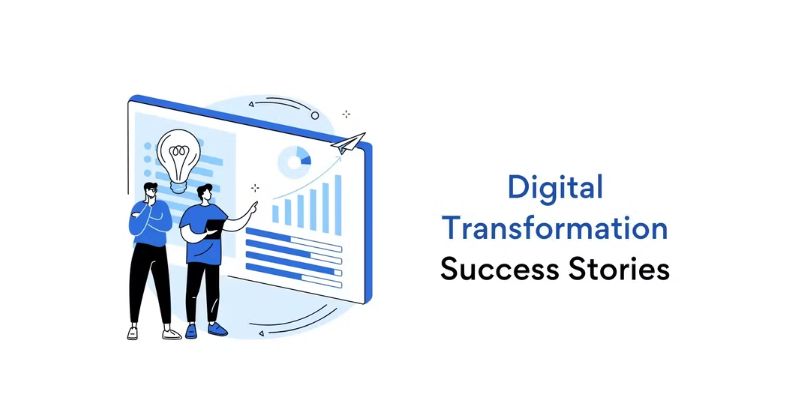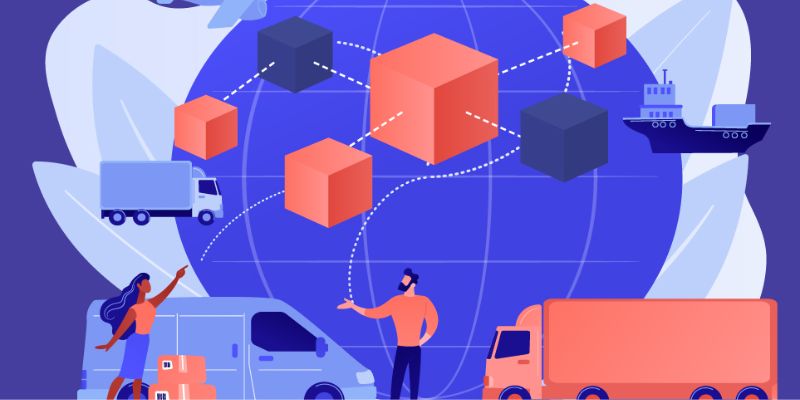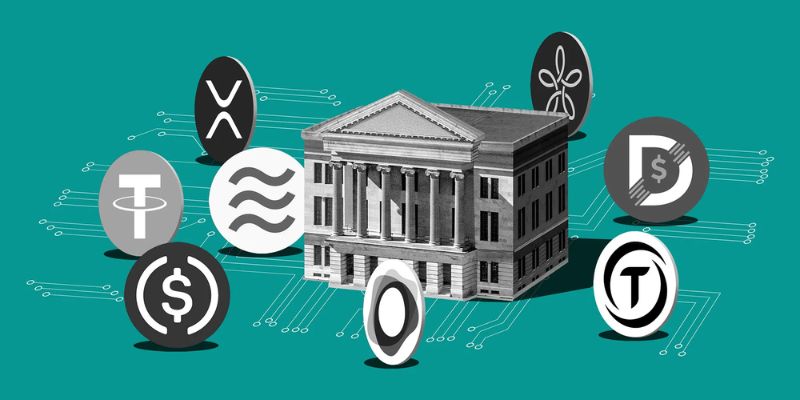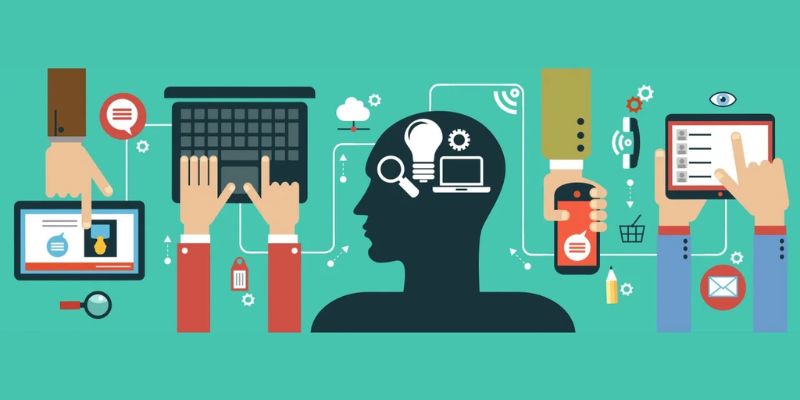Real-world applications of digital transformation strategies are not just buzzwords; they’re game changers for how we do business. Imagine walking into a store and the salesperson already knows your style, or checking your bank account and getting smart advice on how to save money – this is now our reality. From how we shop to how we save, digital steps push industries forward, making them smarter, faster, and more in tune with what we need. I’ve seen firsthand how tech reshapes our world: it’s not just about going digital, but how we use these tools to make life easier and businesses stronger. Let’s dive in and see how this revolution is unfolding before our eyes.
Embracing Digital Transformation: Key Industry Case Studies
Revolutionizing Retail with Omnichannel Strategies
Imagine a store that knows you better than you know yourself. This is now real life. Shops today use many channels to reach customers. You can buy a shirt online, on a phone app, or in a real store. Shops keep track of what you like. They make shopping smooth. No matter how you shop, they remember you.
Retail stores went digital to survive. They started using big data to study buying habits. They learned what customers like. Online and offline sales got connected. Now they sell more stuff. People get what they want easier. Shops also get better at managing stock. They never run out of your size again.
Businesses use tech like IoT to change the game. From smart shelves tracking items to beacons sending deals to your phone as you walk by. This not only gives you special offers. It helps stores know you better. Knowing you lets them offer you what you will probably buy. This means happier customers and better sales.
Fintech Innovations: Reshaping the Financial Landscape
Money matters are now in our hands, literally. Smartphones act like banks. Fintech is huge. It lets us pay bills, get loans and invest, all from our phones. And it’s safe. Blockchain is a tech that makes sure of that. It’s like a digital vault. It keeps our cash and info locked down tight.
Apps now understand our spending. They help us save money. Clear advice is given for tough financial choices. And all the help you need is just a tap away. You don’t need to wait in line at banks anymore. Plus, with AI chatbots, you get fast, smart answers anytime.
Cloud computing has been a game changer in the finance industry. Banks now use the cloud to handle data better. They offer services faster and at lower costs. With cloud computing, they can handle more customers at once. This means quick service for you. And for businesses, it saves time and money. Predictive analytics helps banks see trouble before it happens. They make sure your cash is always safe.
Tech in finance is growing fast. It’s making things better for everyone. With this new tech, we all get smarter about money. We make better choices. We feel more in control. And banks can see us as people, not just numbers. They see our lives and help us when it really counts. This makes trust and builds a bond between us and our banks.

Advancements in Automation: Paving the Way for Efficiency
The Impact of Robotics in Logistics and Supply Chain
Robots are changing how we get things from A to B. In warehouses, small robots zip around, carrying goods to people who pack them. This means more gets done, faster, and with fewer mistakes. Big companies like Amazon use lots of robots.
How do robots help in supply chains? They move items quickly and keep track of them. This lowers the chance of losing stuff. They can even work in the dark, and they don’t get tired. Because of this, your online orders arrive faster.
Now, think of self-driving trucks that may soon carry items across the country. They can drive all day and all night. This makes everything even quicker. Plus, it can be safer since robots don’t fall asleep or text while driving.
Transforming Manufacturing with Predictive Maintenance
Factories are smart now. Machines have sensors that tell when they might break. This is called predictive maintenance. It helps factories fix things before they stop working. If a machine stops, making stuff stops too. That can cost a lot of money.
Predictive maintenance uses data from machines to guess when they’ll need care. For example, if a part usually breaks after 10,000 hours, the factory can replace it at 9,500 hours. No breakdowns mean no surprise costs or delays.
In the past, fixing things was a guessing game. You’d wait for something to break, then rush to fix it. Now, thanks to smart tech, we’re ahead of the game. Factories run smoother and make better stuff. And guess what? That’s good for us as customers too.
Remember, robots and smart machines are just tools. We, people, invent and manage them. They’re here to help us do better and live better. Automation isn’t about replacing us; it’s about making our jobs and lives easier.

The Role of Emerging Technologies in Enhancing Customer Experience
AI and Big Data: Personalizing the Customer Journey
First, think about shopping online. You see stuff you like right away, right? Well, that’s AI and big data at work. These tools track what you like and show you more of it. So, when you shop, it feels like the store knows you. That’s because AI studies your clicks, likes, and buys. It guesses what else you might like, and it’s often right! Big data is big, like its name; it handles tons of data about buying trends. It spots what’s hot and what’s not. When stores use AI and big data, they sell more. And you find cool stuff without searching for hours.
Now, go deeper. AI doesn’t just guess. It learns, kind of like you and me, but faster. This tech takes notes on all your online moves. Then, it spots patterns and even predicts what you’ll need next. Let’s say you buy a phone online. Quick as a flash, AI suggests a case for your new gadget. How? It saw folks who buy phones often buy cases too. It’s clever and super helpful. And big data, that’s the muscle behind the brain. It sorts through loads and loads of info. It tells stores what most kids your age like to play with or wear. This helps stores stock up on the right stuff and even design new things you’ll want.
VR and AR: Innovative Approaches to Customer Engagement
Now, onto VR and AR – it’s like magic in shopping and games. Ever wear a headset and see a dinosaur in your room? That’s VR! It takes you to other worlds while you stay put. But VR is not just for fun and games. Imagine if you could walk through your dream house before it’s even built. That’s just one cool use! Businesses use VR to show you things they think you’ll love.
AR is a bit different. Ever see a sofa in your house through your phone’s camera? That’s AR! It’s tech that puts fake things in the real world. So, you can check if that purple sofa looks good in your room before you buy it. No more guessing, and no more buying the wrong stuff.
Businesses use VR to train folks in new jobs too. It’s safer and cheaper. Let’s say a pilot needs to learn to fly. It’s way better to make mistakes in a fake plane than a real one, right? Or doctors can practice operations without real folks, which is way less scary for everyone. And AR helps workers fix things like engines and wiring by showing them hidden parts and how they fit together. They see the steps right in front of them, which helps them learn faster.
And here’s the fun part: you can use your phone to see clothes on you without even trying them on. You just click, and there it is, like you’re looking in a mirror. That’s AR making life easier. You can thank AR next time you buy a cool shirt online that fits just right.
Using AI, big data, VR, and AR, businesses make shopping and learning more fun. They help you find what you want faster and try new things in cool ways. And I think that’s pretty awesome. Don’t you?

Cutting-Edge Health and Smart City Solutions
Digital Tools Transforming the Healthcare Sector
Doctors and nurses use tech to stay a step ahead. They check health records fast and spot troubles early with digital tools. This tech shares info quick and keeps it safe. It helps patients at home too. With smartphone apps, they track their health and chat with doctors easily.
Building the Foundations of Smart City Infrastructure Projects
Smart cities are the future. They use sensors and the web to make life better and greener. Traffic lights talk to cars to cut down on waiting. Energy systems learn when to save power, helping us all. It’s about building cities that think and help us live smarter.
In this post, we dove into how digital makes big waves in different fields. We saw retail go all-in with smart shopping. Fintech’s making money matters easier for everyone. Robots and smart systems are making work faster in factories and trucks. Tech like AI and VR is changing the game for shoppers, making things fun and personal.
From better health care tools to smarter cities, tech’s proving to be a game-changer. We’re not just guessing; these cases show real wins across the board. My final take? Embrace tech and stay ahead. It makes things better for businesses and customers alike. The future’s bright, and it’s digital. Let’s get on board and lead the way!
Q&A :
What are the top real-world applications of digital transformation strategies?
Digital transformation strategies have seen wide application across various sectors. Some of the most prominent real-world applications include the digitization of healthcare through electronic health records and telemedicine, the transformation of retail with e-commerce and omnichannel shopping experiences, the use of big data and analytics in finance to improve decision-making, and the integration of IoT devices to enhance operations in manufacturing. Each of these applications leverages technology to innovate their workflows, improve customer experiences, and optimize operational efficiency.
How is digital transformation impacting customer experiences?
Digital transformation is redefining customer experiences by providing more personalized, convenient, and interactive services. Through data analytics, companies can tailor offerings and engage with customers on a more individual level. Digital platforms enable 24/7 accessibility and multichannel support which means that the customer service is greatly enhanced. Mobile applications, chatbots, and social media are just a few examples of tools that have improved the customer journey by making interactions with brands instant and more rewarding.
In what ways do digital transformation strategies enhance business efficiency?
Digital transformation strategies can significantly enhance business efficiency by automating manual processes, reducing errors, and cutting down on time-intensive tasks. Cloud computing enables easier access to information and resources, facilitating remote work and collaboration. AI and machine learning can process large amounts of data at high speed, delivering insights that can improve operational workflows and decision-making. These technologies ensure that businesses stay competitive by enabling them to do more with less.
Can digital transformation strategies help in sustainability and green practices?
Yes, digital transformation can play a pivotal role in promoting sustainability and the adoption of green practices. By optimizing resource management and reducing waste through smart systems, businesses can significantly lower their carbon footprint. Digital tools can track and analyze energy consumption, automate energy-saving processes, and support the shift to paperless offices. These strategies not only contribute to a healthier environment but can also result in cost savings for companies.
What role does digital transformation play in competitiveness on a global scale?
Digital transformation is a key driver for maintaining and enhancing competitiveness on a global scale. It allows businesses to leverage cutting-edge technologies to improve their products, services, and internal processes, thus staying ahead of international competition. Adopting digital strategies enables seamless global communication, efficient supply chain management, and access to wider markets through e-commerce platforms. Companies that embrace digital transformation are better positioned to respond to global market trends and customer needs promptly.



